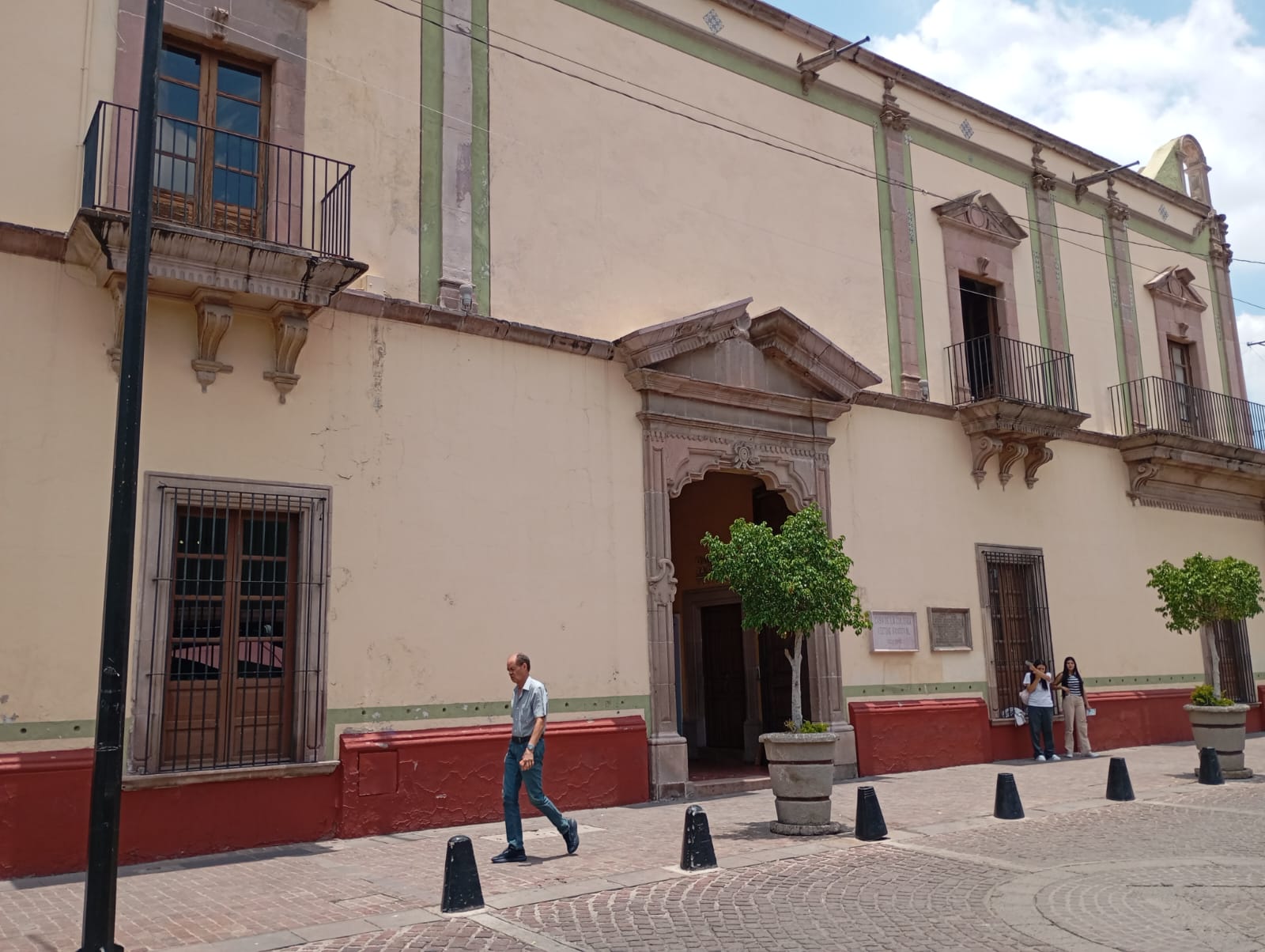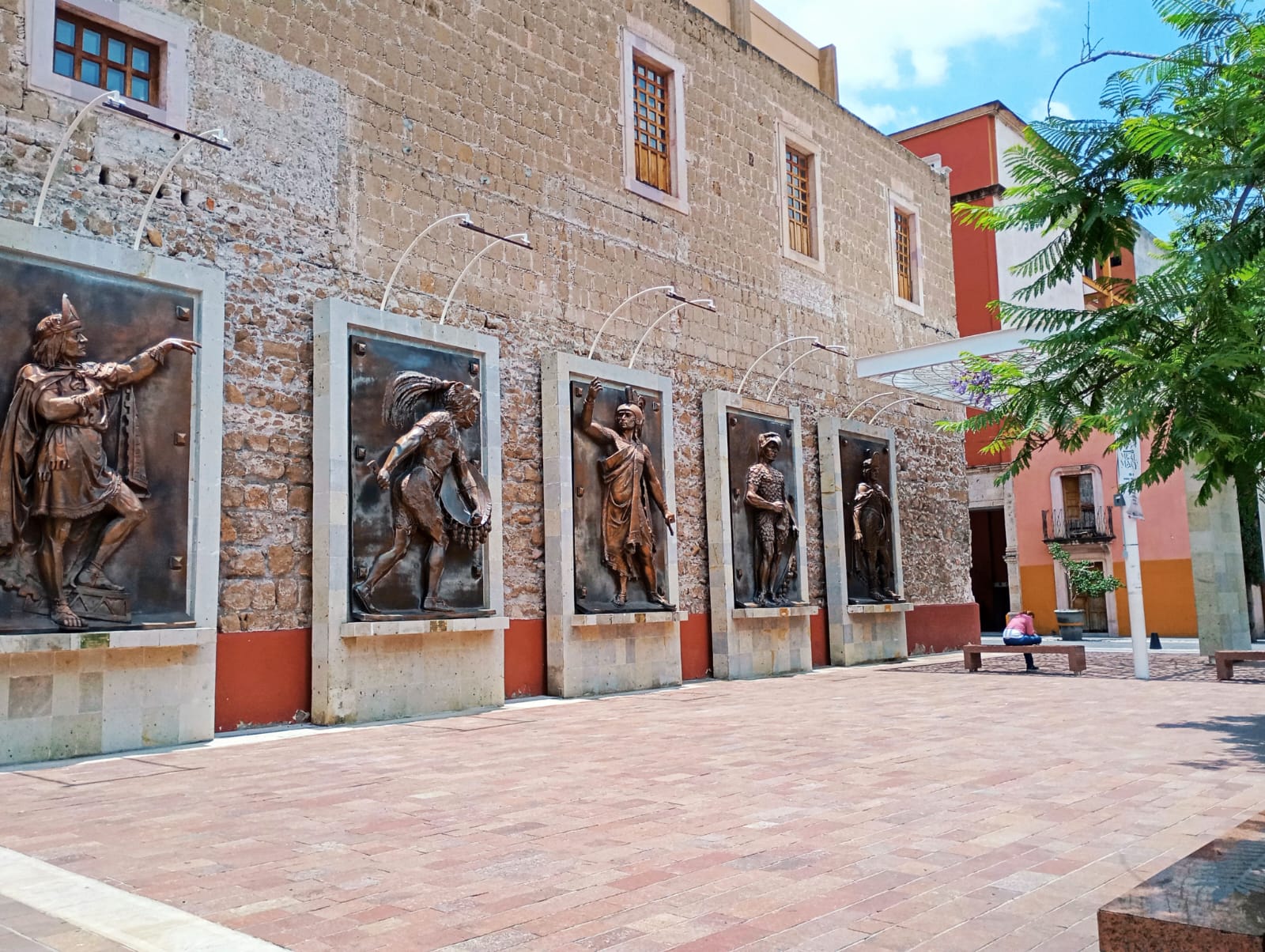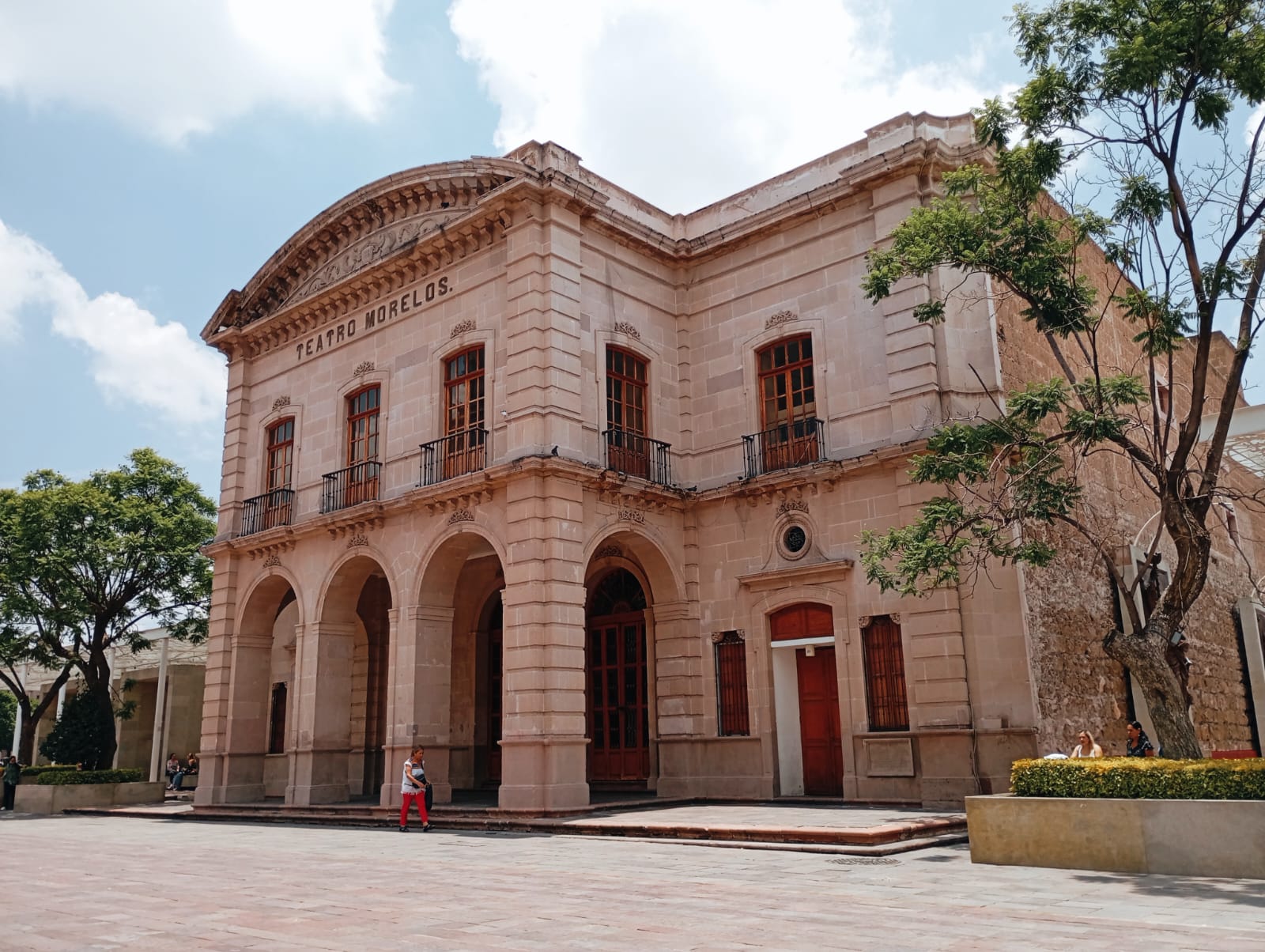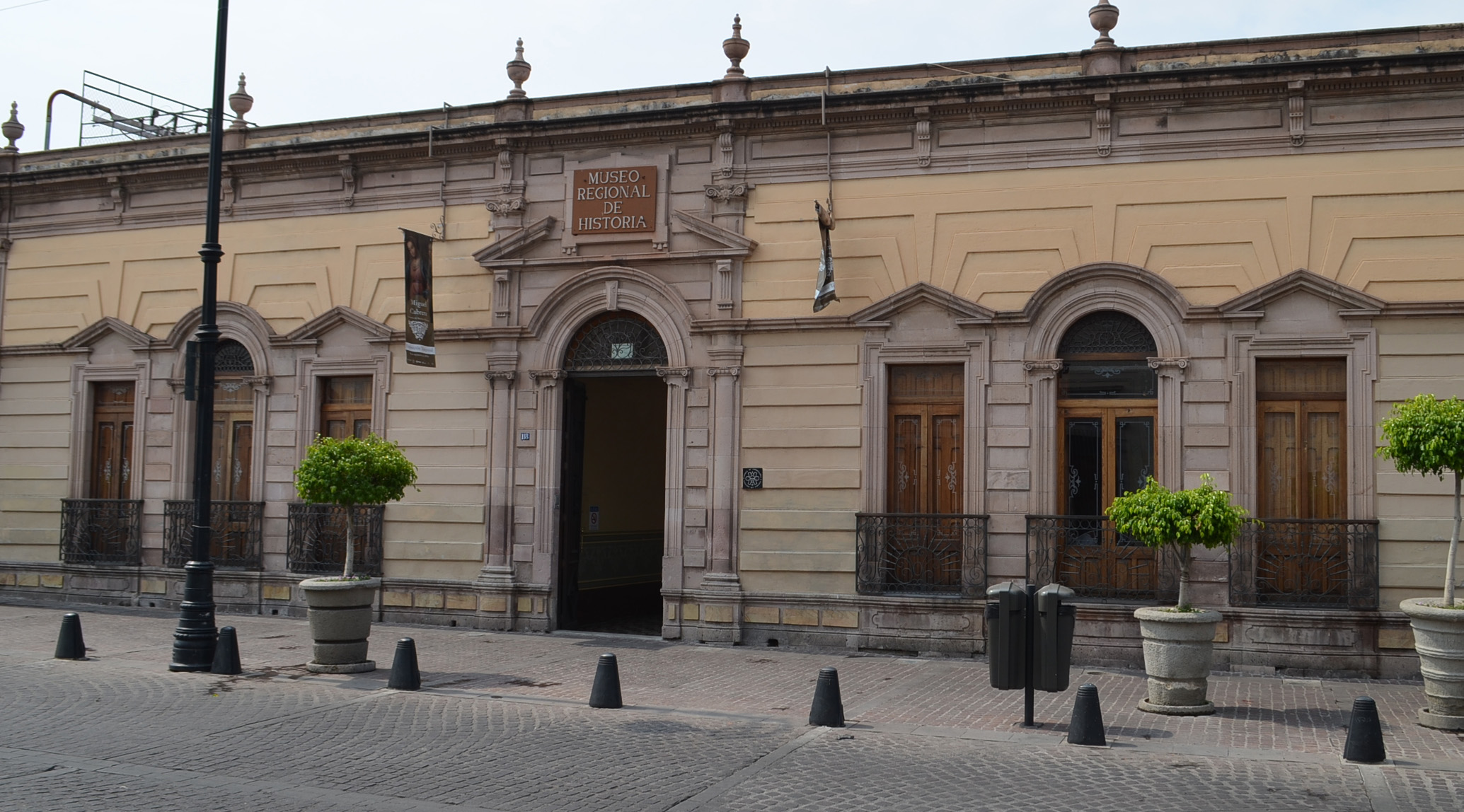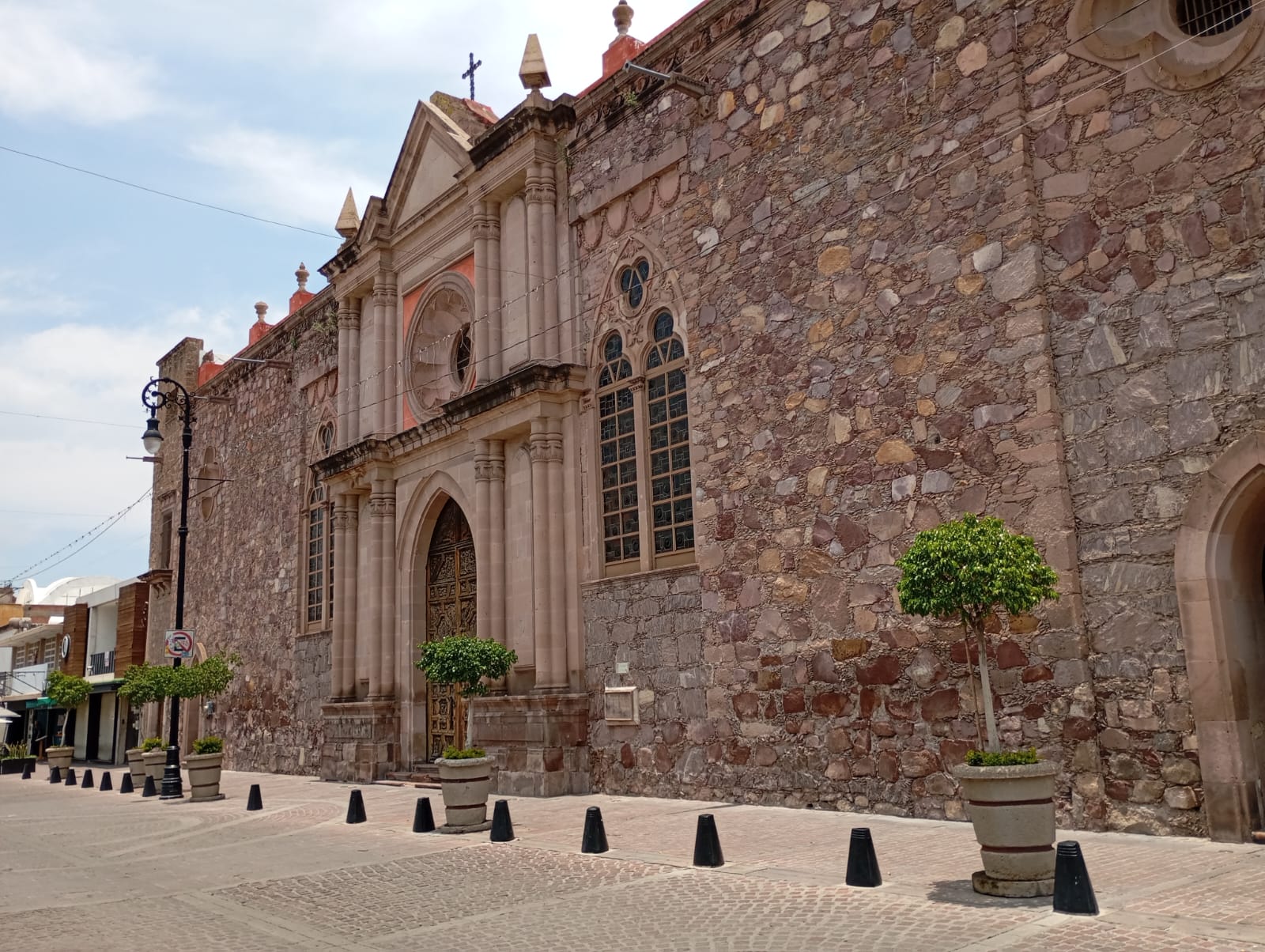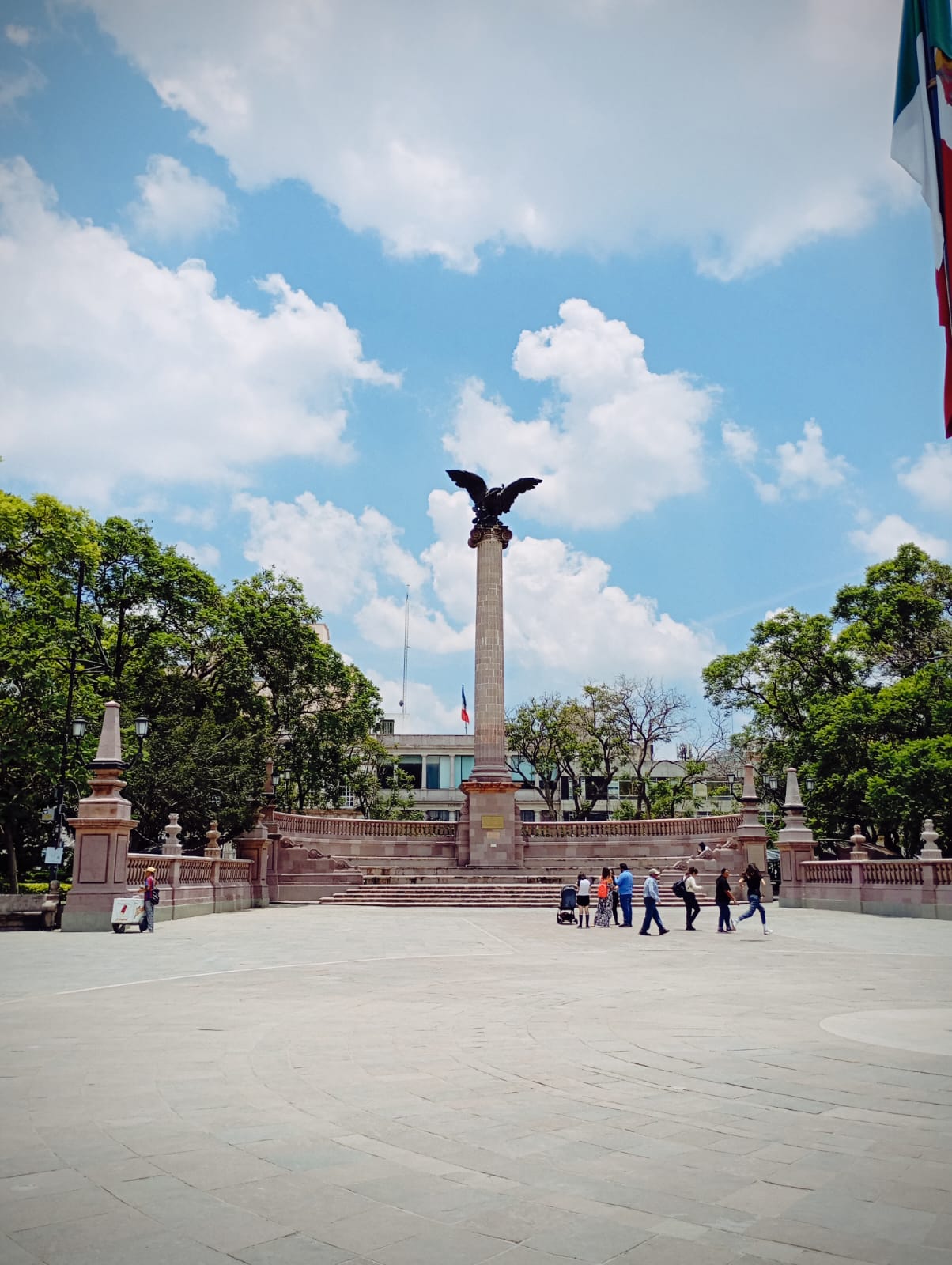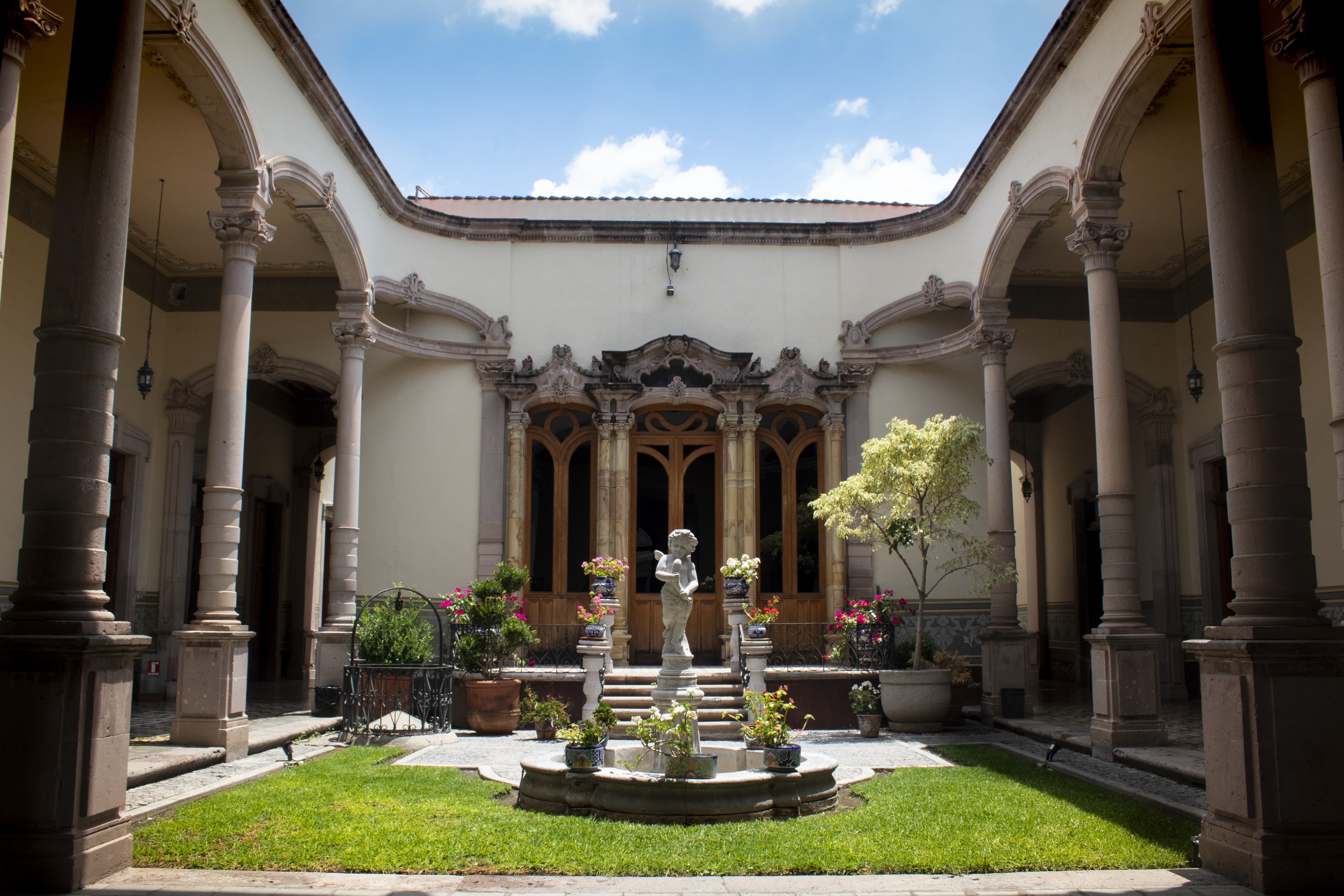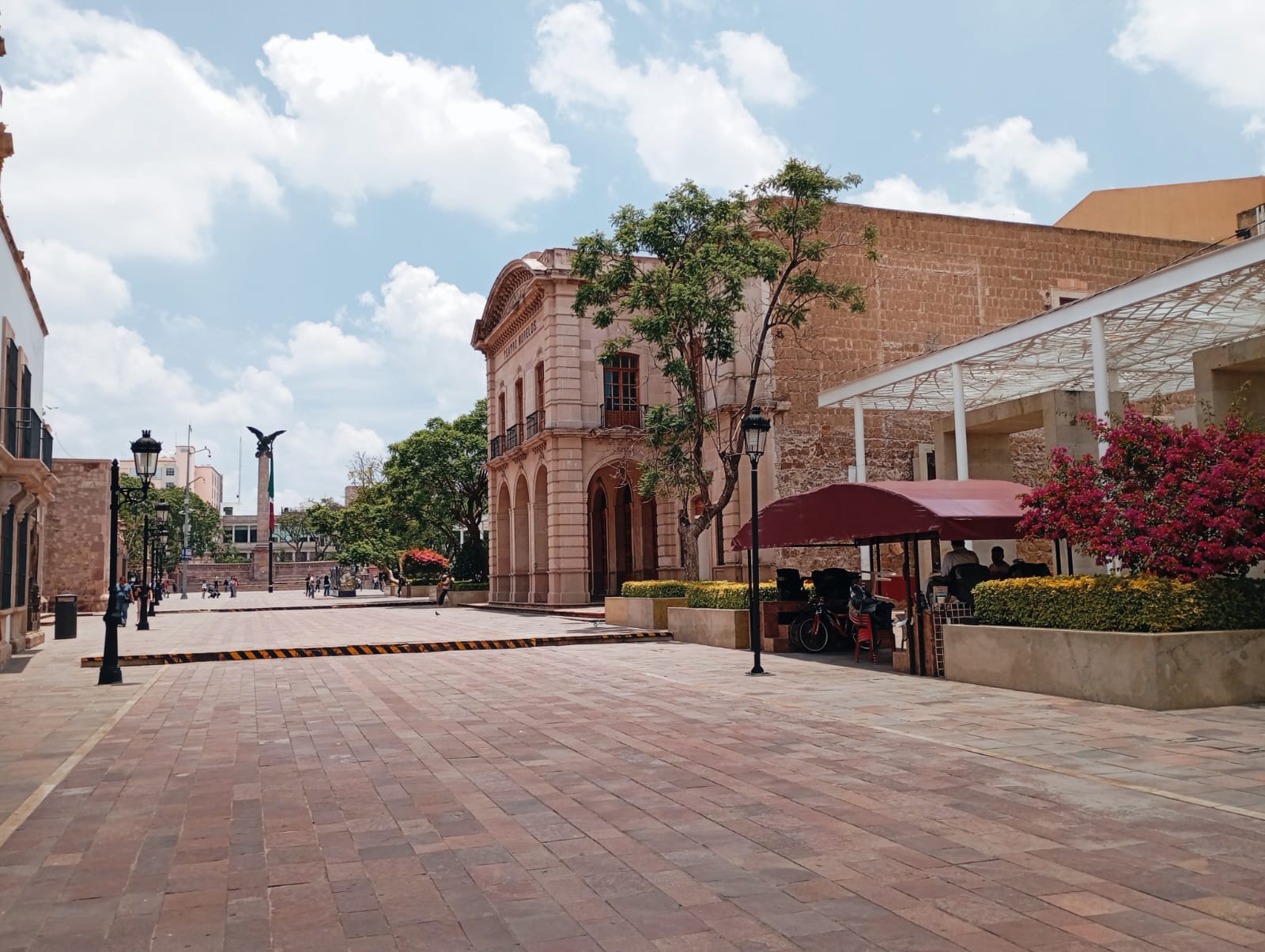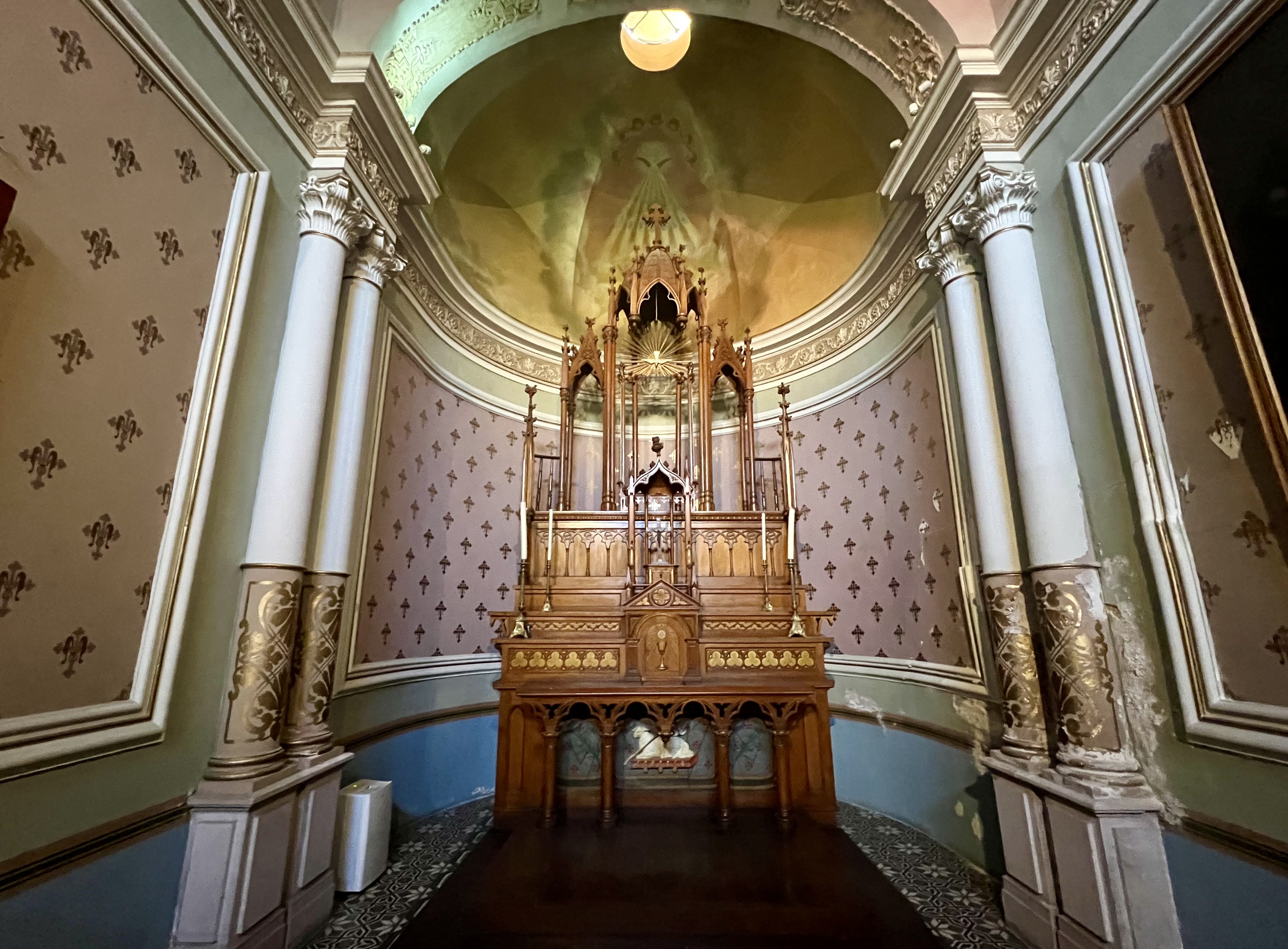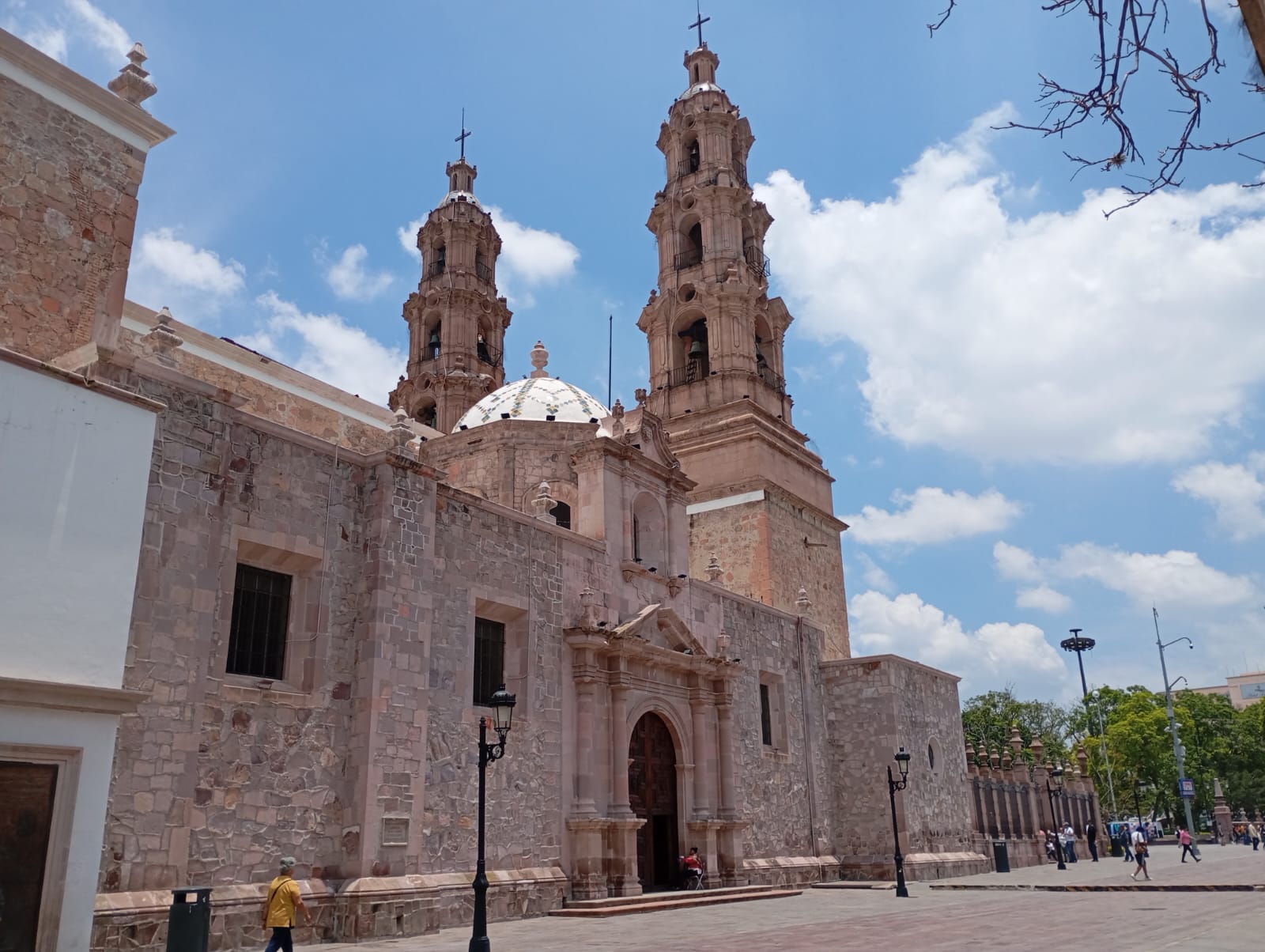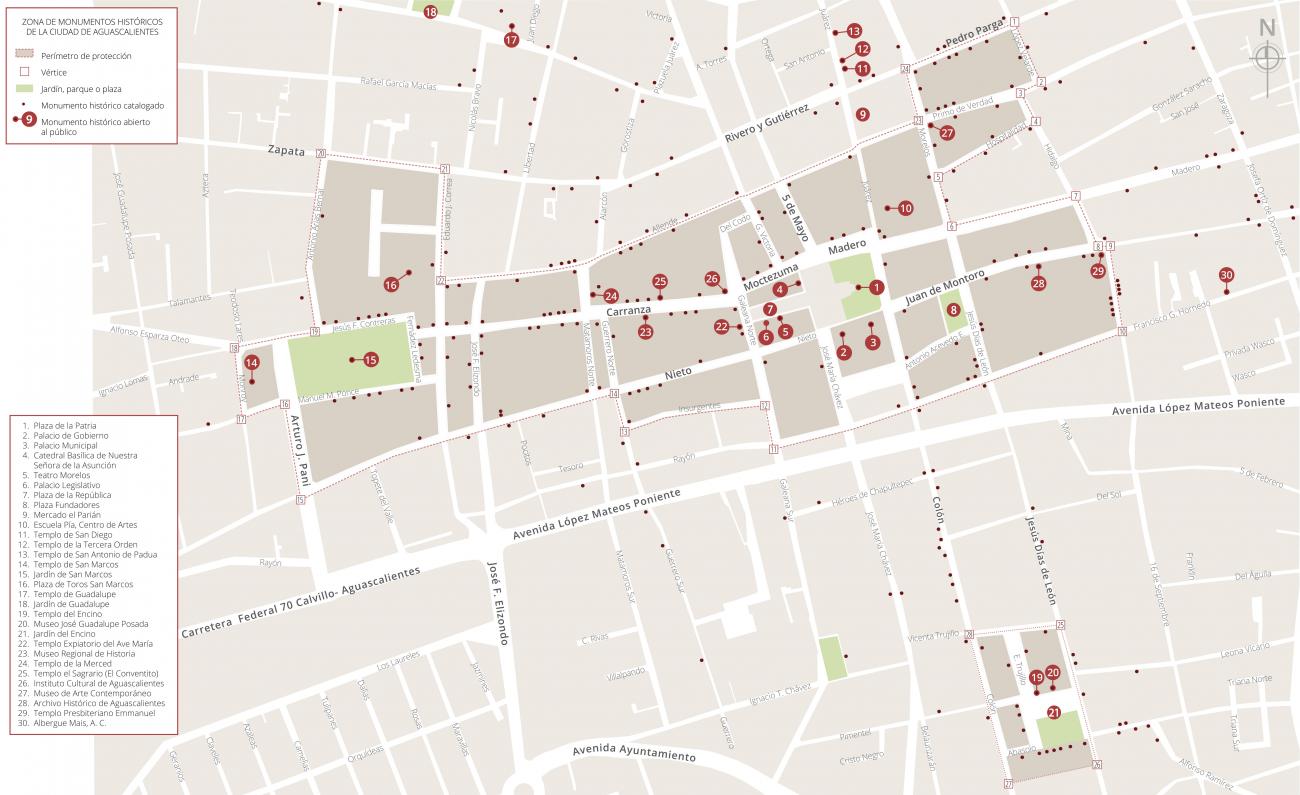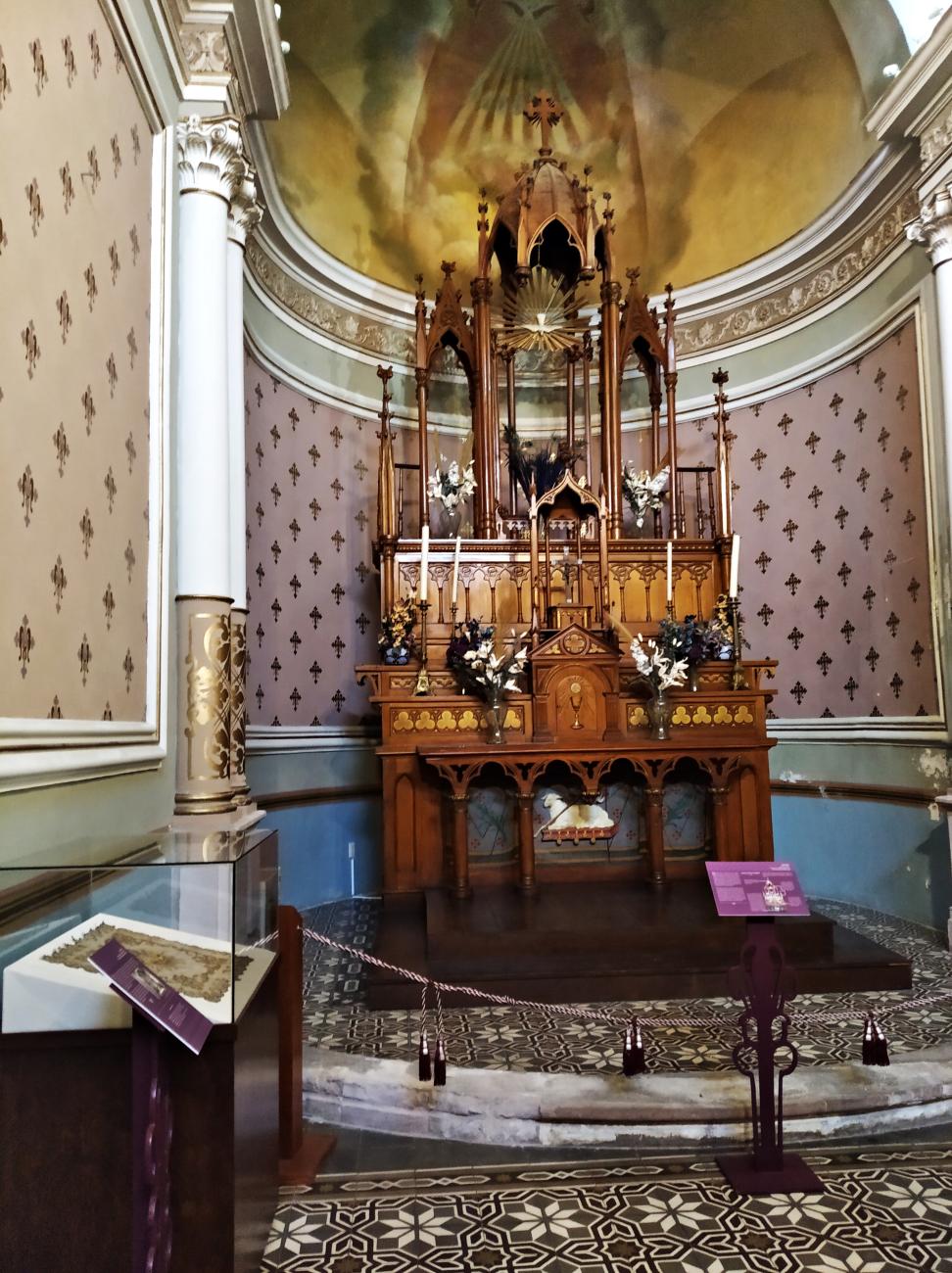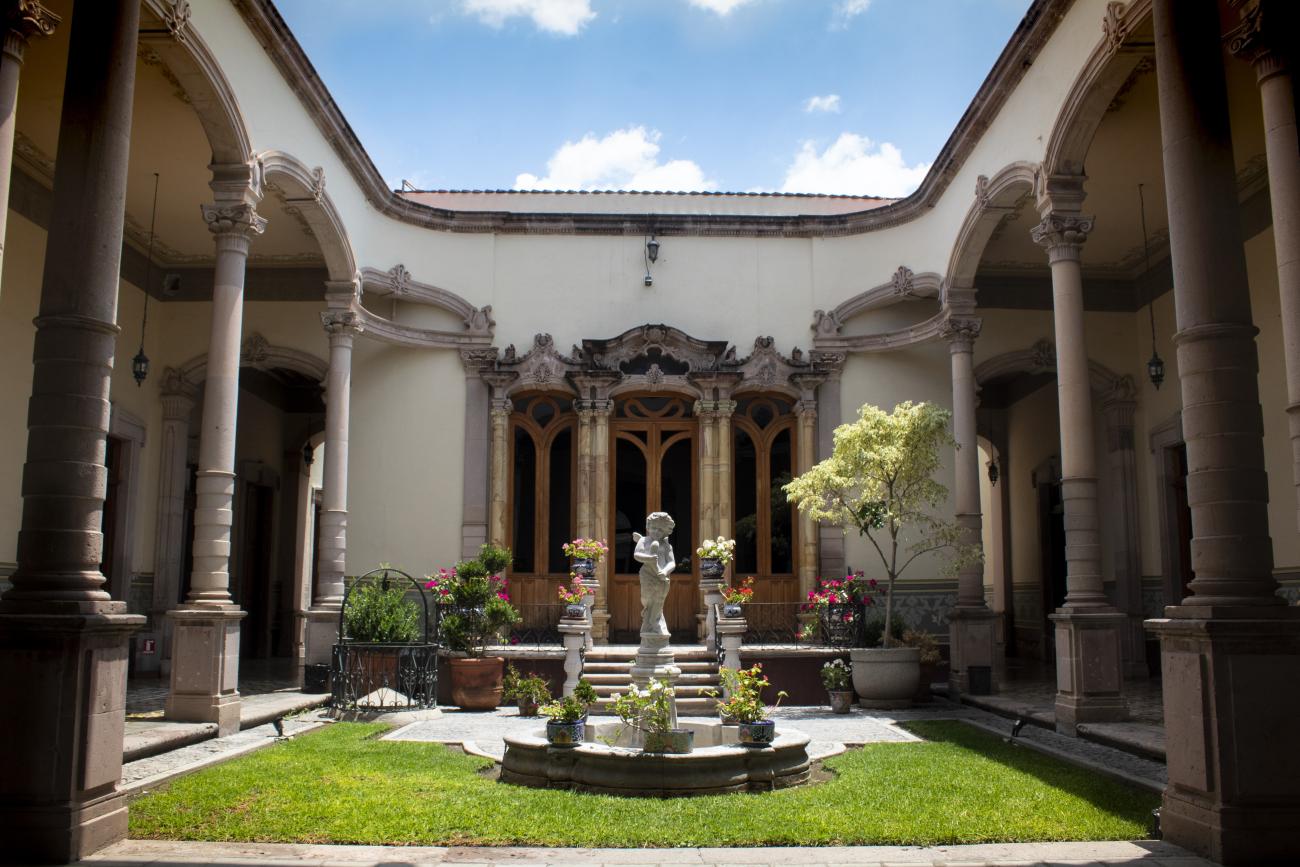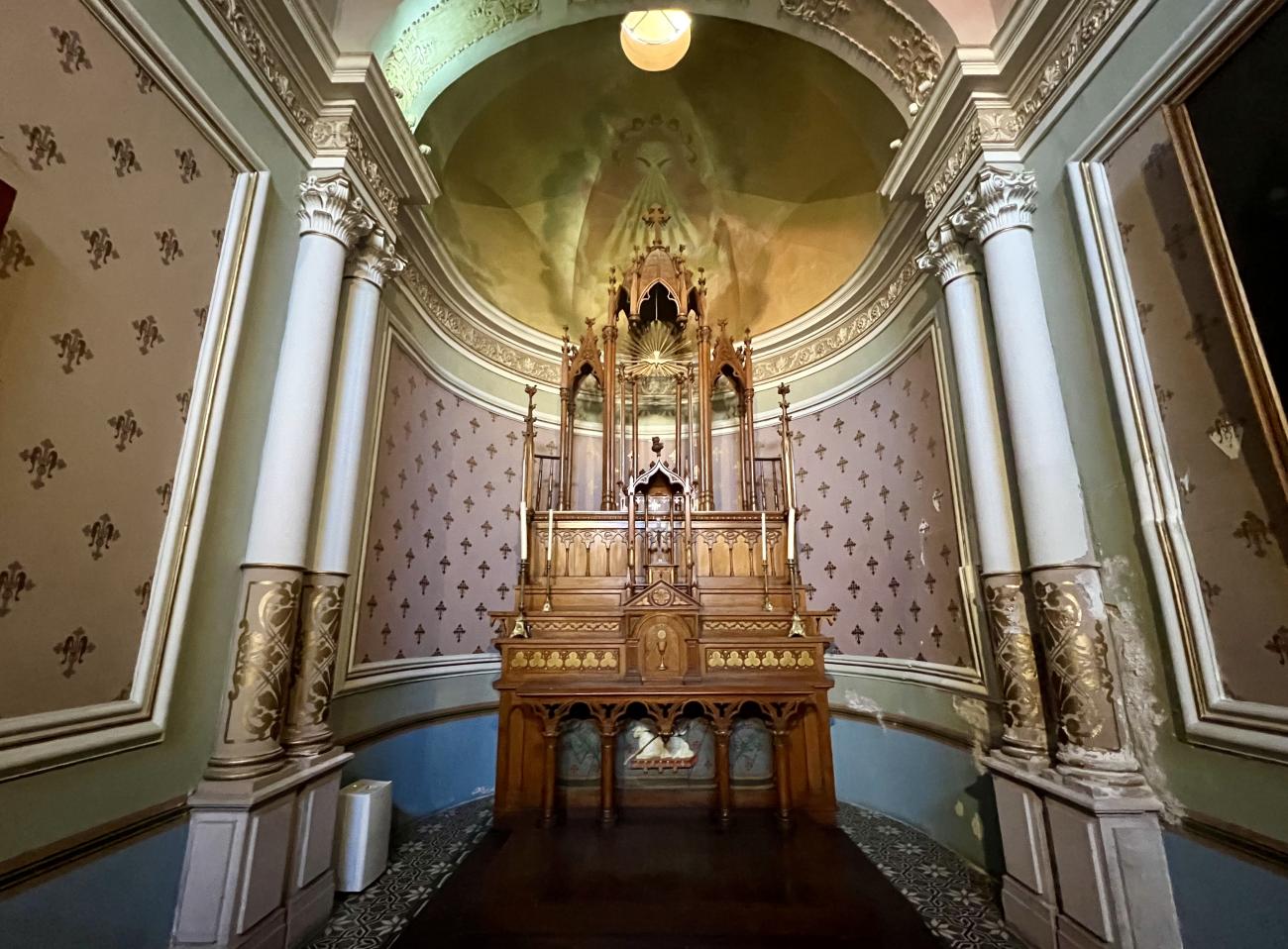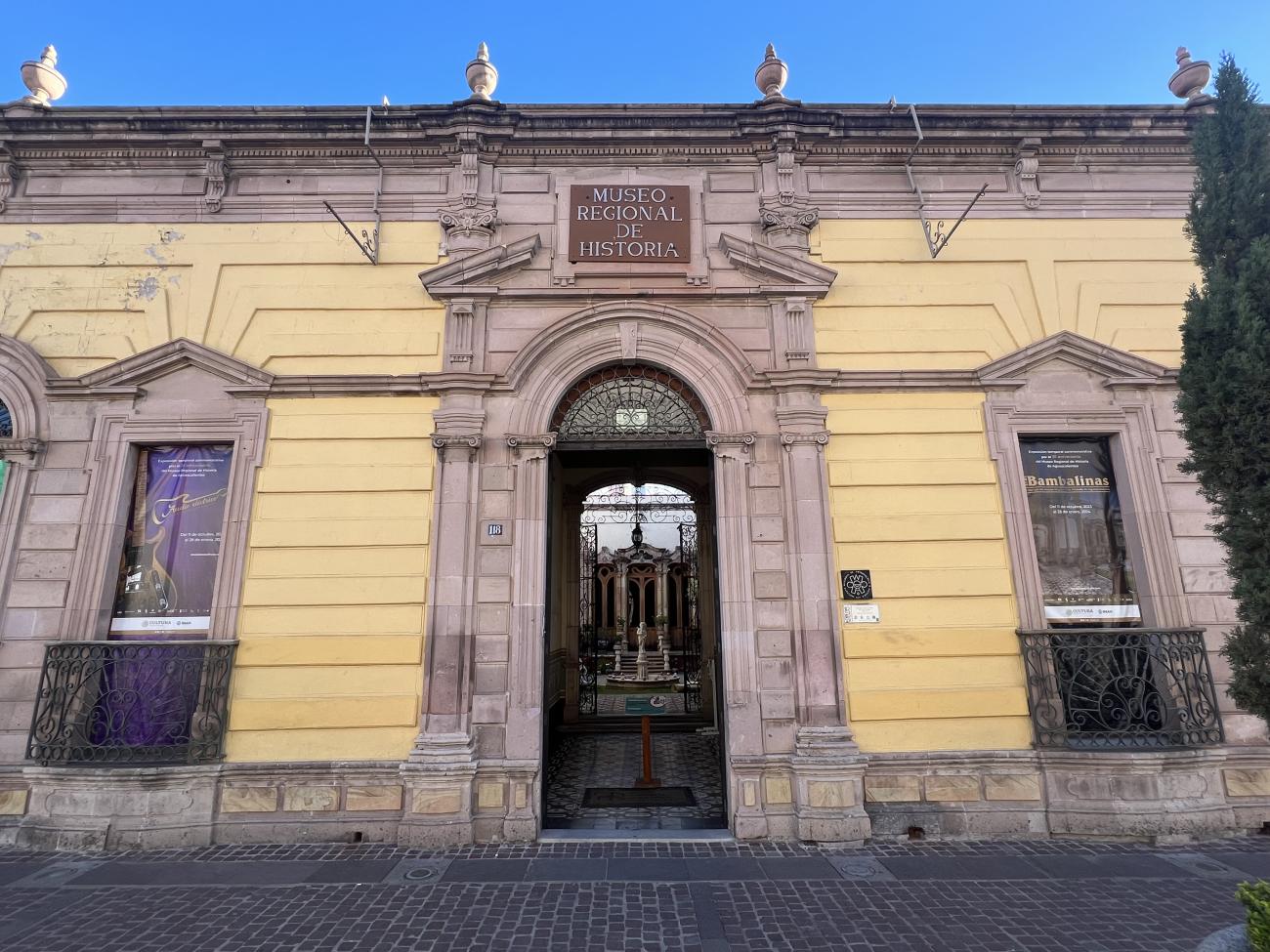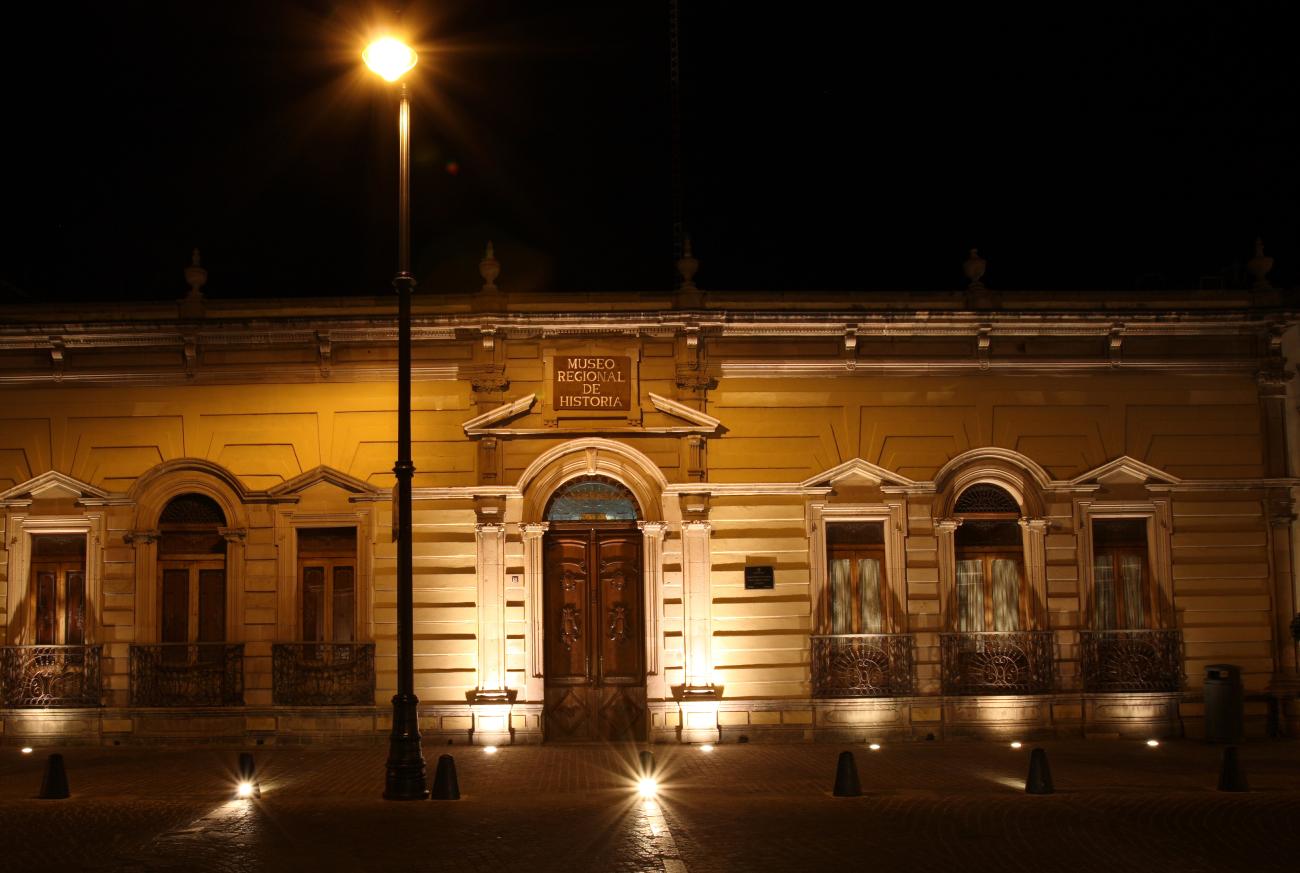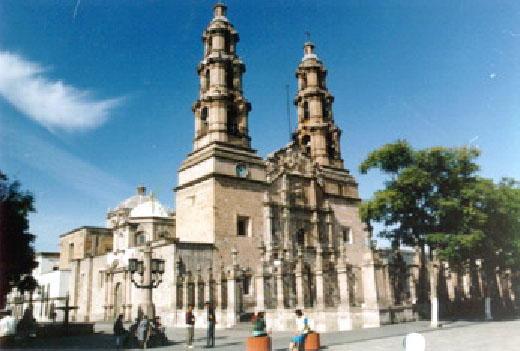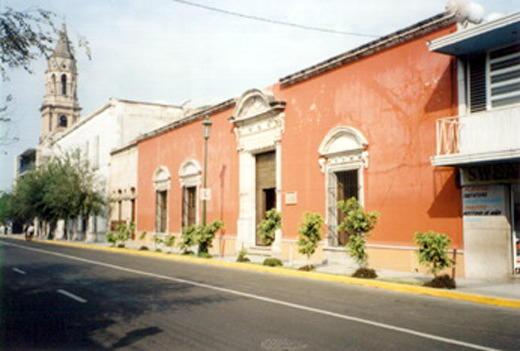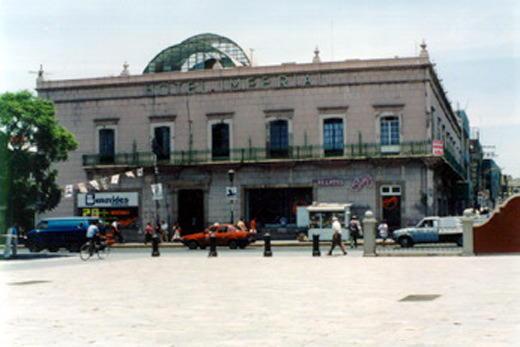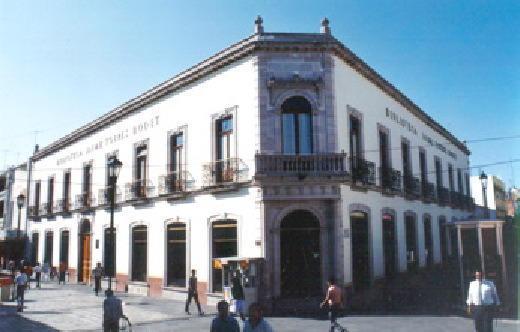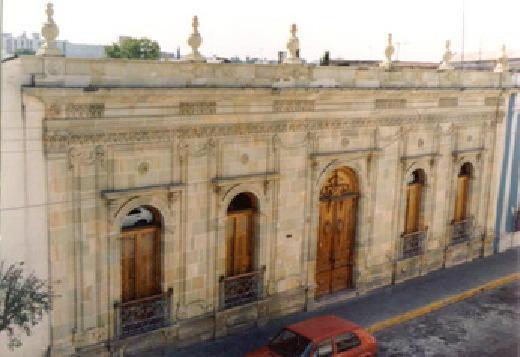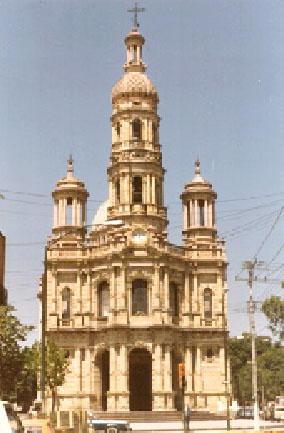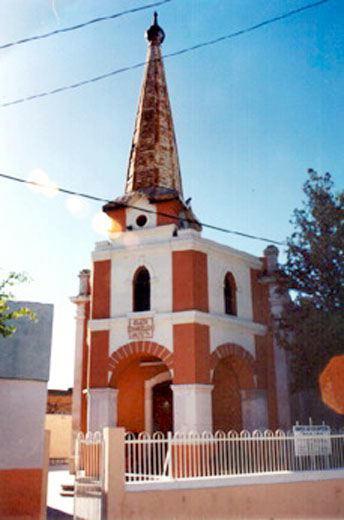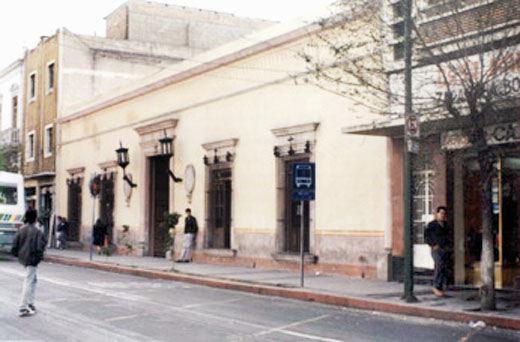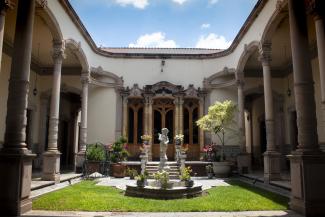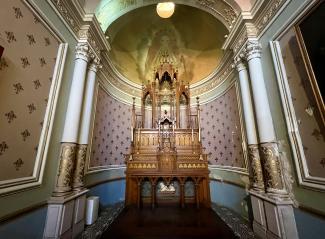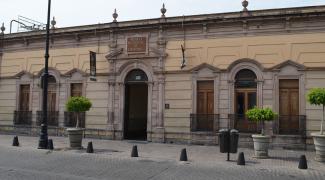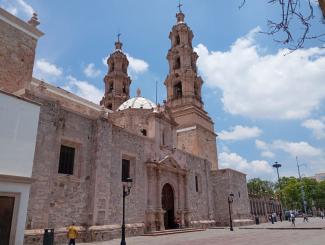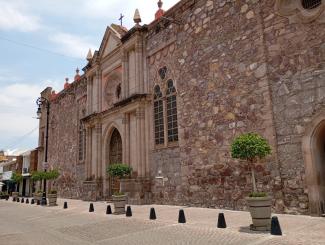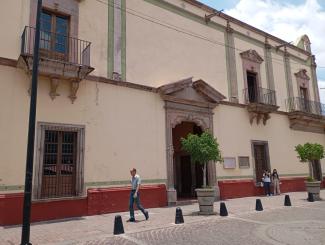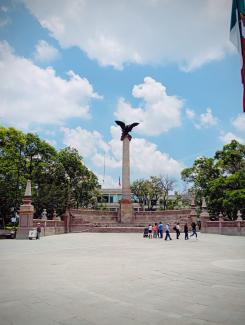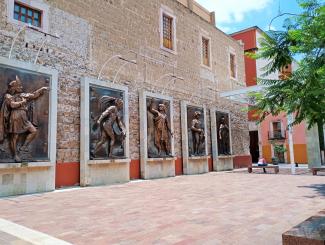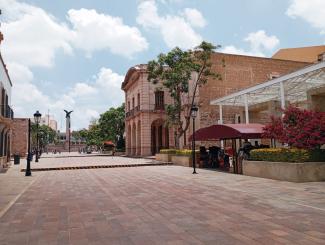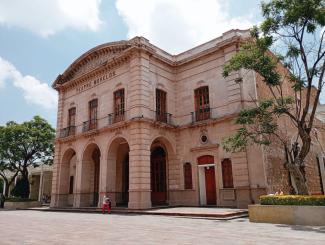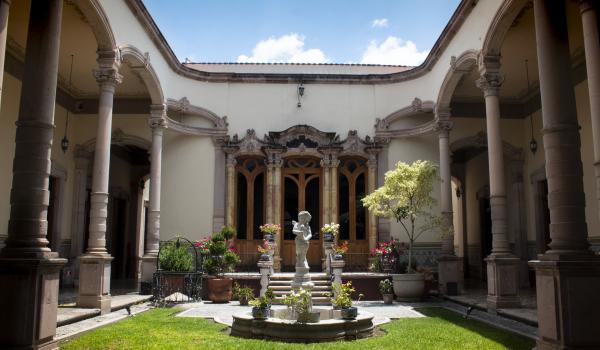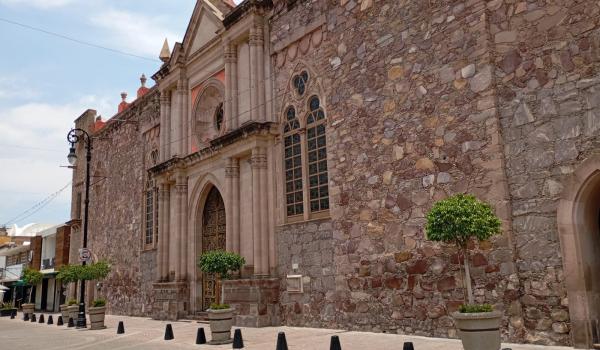Aguascalientes
Historical Monuments Zone
Abstract
In colonial times, Aguascalientes was an important town along the Camino Real de Tierra Adentro (Royal Inland Road), while during the Mexican Revolution it was the headquarters of the Revolutionary Convention. Known for its abundance hot springs, this city is characterized by its colonial architecture and popular festivals with deep historical roots.
Founded in the 16th century, Aguascalientes is the capital of the state of the same name. Throughout the 16th and 17th centuries it was a key point for the expansion of the Spanish colony towards the north of New Spain. It also functioned as a source of grain and principal supply site for mining, a major activity in Zacatecas and Guanajuato during the viceregal era.
In 1914 the Morelos Theater of Aguascalientes hosted the Revolutionary Convention where the troops of Francisco Villa, Emiliano Zapata and Venustiano Carranza met to discuss a government program that met with the social, political and economic reforms demanded by the Revolution. This venue was built by the engineer José Noriega at the end of the 19th century. It is neoclassical in style and has a capacity of 600 people.
Aguascalientes was declared a Zone of Historical Monuments in 1990. The historical zone is made up of 30 blocks with an area of 470 m2, with buildings constructed between the 16th and 19th centuries. The most important buildings are the churches of San Marcos, La Merced, El Conventito, Ave María and Emmanuel. There are other buildings for educational activities, public use and welfare services, in addition to those dedicated to military or civil purposes, among which the government and municipal palaces stand out. In 2010 was registered by UNESCO on the World Heritage List as part of the cultural itinerary of the Camino Real de Tierra Adentro,.
The urban layout of the historic area is irregular, due to the vestiges of the old hydraulic infrastructure. This means it is not a perfect grid of right-angled junctions, but instead the streets widen or narrow, strike out diagonally or zig-zag, and some even end in the middle of a block. The plazas and gardens are open to the public and are located in front of churches; the plazas of San Marcos and La Patria and the Jardín del Encino stand out. Venustiano Carranza street communicates the city center with the Jardín San Marcos, which was formerly home to the Tlaxcala groups.
The church of San Marcos was founded in 1764 and is located in the neighborhood of the same name. The traditional San Marcos Fair is held here every year, between April and May. This fair has been held for 191 years, since 1828, and is one of the oldest and most important in Mexico due to its great diversity of exhibitions, cultural, artistic, sporting events, mechanical games, local cuisine and fireworks. One of the most renowned spectacles is the Serial Taurino, a bullfighting festival which takes place in the monumental Plaza de Toros and is considered the largest on the American continent. Well-known figures from the world of bullfighting participate, to the delight of numerous spectators.
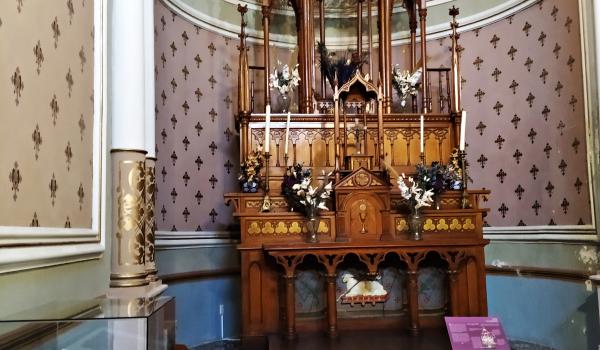
Museo Regional de Historia de Aguascalientes
This building was designed by José Refugio Reyes.
Museo Regional de Historia de Aguascalientes
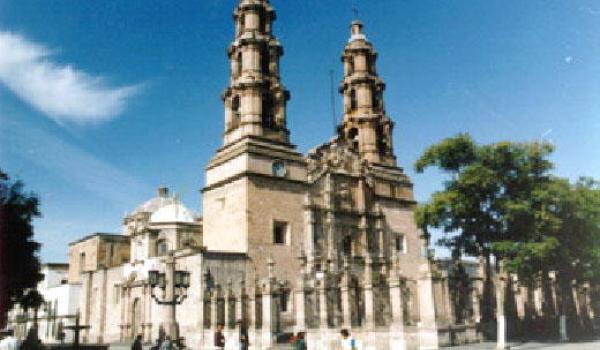
Catedral Basílica de la Virgen de la Asunción
The parish priest Antonio Flores de Acevedo began the construction of this parish church in 1704. The main part was completed in 1738, the north tower in 1764, and the south tower in 1946. Since August 15, 1741, the worship of the Virgin of the Assumption has been celebrated here.
Catedral Basílica de la Virgen de la Asunción
The parish priest Antonio Flores de Acevedo began the construction of this parish church in 1704. The main part was completed in 1738, the north tower in 1764, and the south tower in 1946. Since August 15, 1741, the worship of the Virgin of the Assumption has been celebrated here.

Centro de Artes Visuales
17th-century building.
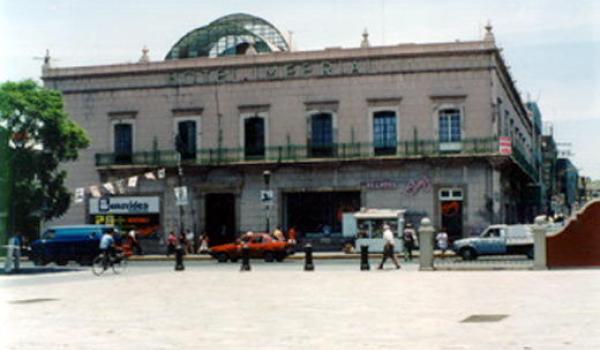
Hotel Imperial
In 1572, the construction of this building began on the initiative of Viceroy Enríquez de Almanza and the President of the Audiencia of Nueva Galicia, Jerónimo de Orozco.
Hotel Imperial
In 1572, the construction of this building began on the initiative of Viceroy Enríquez de Almanza and the President of the Audiencia of Nueva Galicia, Jerónimo de Orozco.
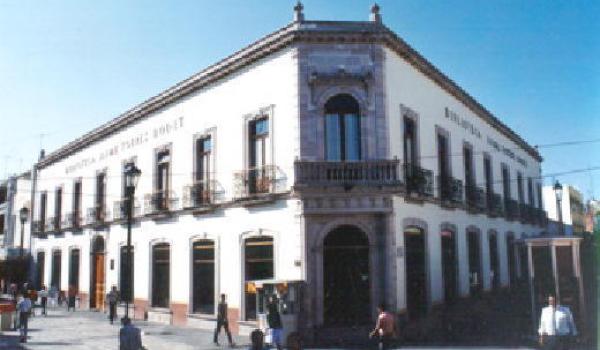
La casa de las Gardenias (Biblioteca J. Torres Bodet)
This building was constructed by Refugio Reyes in 1916; the complex was inaugurated in February 1986.
La casa de las Gardenias (Biblioteca J. Torres Bodet)
This building was constructed by Refugio Reyes in 1916; the complex was inaugurated in February 1986.
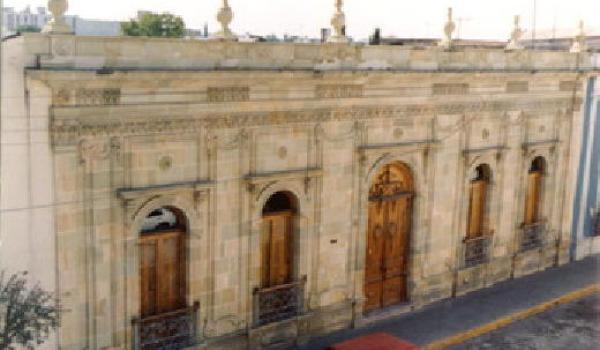
Archivo Histórico del Estado
Designed by architect J. Refugio Reyes, this property was acquired and restored on October 24, 1986.
Archivo Histórico del Estado
Designed by architect J. Refugio Reyes, this property was acquired and restored on October 24, 1986.
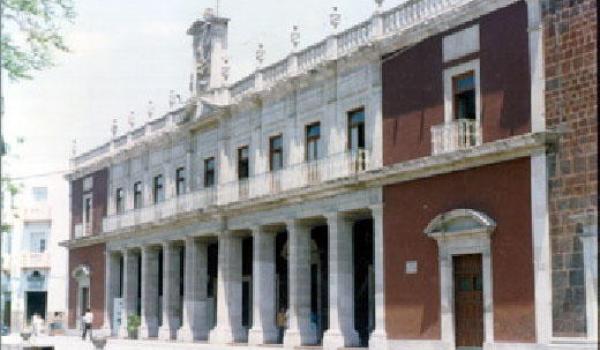
Palacio Municipal
This property was built in the first decade of the 19th century on land donated by the Rincón Gallardo family to the City Council for the construction of the jail and the royal house.
Palacio Municipal
This property was built in the first decade of the 19th century on land donated by the Rincón Gallardo family to the City Council for the construction of the jail and the royal house.
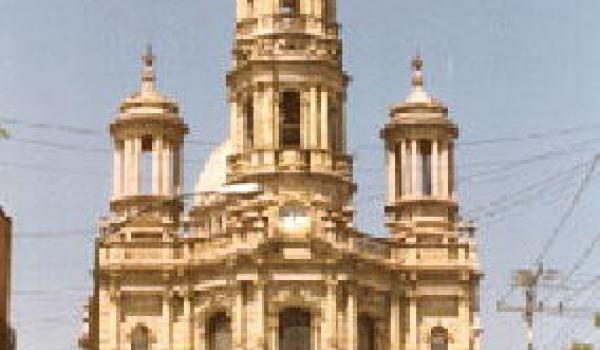
Templo de San Antonio
On October 4, 1896, the cornerstone of this religious building was laid under the direction of architect Refugio Reyes, with funding from Antonio Morfin Vargas. It was consecrated on December 8, 1908.
Templo de San Antonio
On October 4, 1896, the cornerstone of this religious building was laid under the direction of architect Refugio Reyes, with funding from Antonio Morfin Vargas. It was consecrated on December 8, 1908.
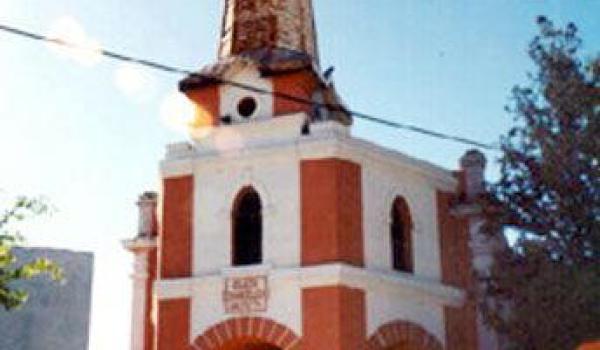
Templo Iglesia Evangelista Bautista
19th-century building.
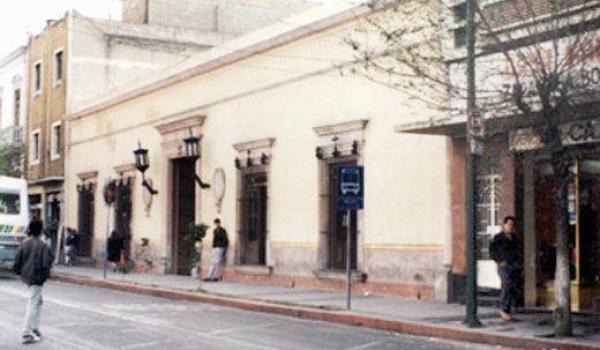
Casa Terán
It is possible that it was built by Felipe Pérez Terán. The next owner was Jacinto Pérez Terán, captain commander, subdelegate, and councilor of the villa of Aguascalientes.
Casa Terán
It is possible that it was built by Felipe Pérez Terán. The next owner was Jacinto Pérez Terán, captain commander, subdelegate, and councilor of the villa of Aguascalientes.
Ex hacienda de Peñuelas
19th-century building known as San Isidro Labrador, but commonly referred to as Peñuelas due to the surrounding rocky terrain. It is one of the oldest estates in the state. The estate's chapel, dedicated to the Purísima Concepción, was constructed between 1847 and 1852.
Ex hacienda de Peñuelas
19th-century building known as San Isidro Labrador, but commonly referred to as Peñuelas due to the surrounding rocky terrain. It is one of the oldest estates in the state. The estate's chapel, dedicated to the Purísima Concepción, was constructed between 1847 and 1852.

